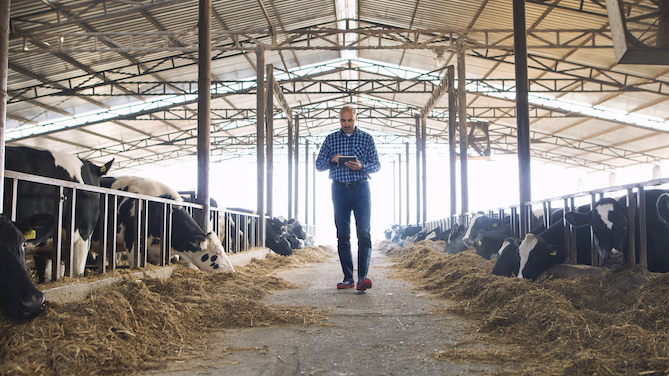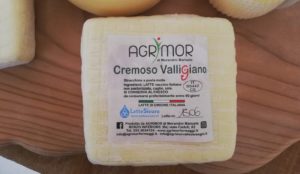“Antimicrobial resistance is a global crisis that threatens a century of progress in health and achievement of the Sustainable Development Goals”: the “No time to wait securing the future from drug-resistant infections” report, released by the Interagency Coordination Group on Antimicrobial Resistance in April 2019, could not have been more straightforward. Antimicrobial resistance is a concrete threat for humans, animals and the environment, and this is particularly due to the fact that the drivers and impact of AMR lie in humans, terrestrial and aquatic animals, plants, food, feed and the environment. All these elements are interconnected to each other; thus, a “One Health” approach is essential to address this challenge on several aspects. Why there is no time to wait?
- because every year, drug-resistant diseases already cause at least 700,000 deaths globally; if no action is taken, this figure could increase to 10 million deaths globally per year by 2050;
- because the economic damage of uncontrolled antimicrobial resistance could be as dramatic as the experience we had during the 2008-2009 global financial crisis as a result of highly increased health care expenditures; impact on food and feed production, trade and livelihoods; and worsened poverty and inequality;
- because if in higher-income countries a set of simple actions to address antimicrobial resistance could pay for itself, on the other hand, in lower-income countries, additional but still relatively modest investments are compellingly required.
Thus, tackling AMR must be a global effort to ensure animal and public health, food safety and environmental protection. It is an important mechanism since it limits the range of antimicrobial substances that can be used to treat infections with effectiveness. Reduced effectiveness of treatments can mean an increase in the prevalence and severity of disease in humans and animals, with consequent impact on animal welfare, human health, food safety and food security.
Although resistance is a natural mechanism, where resistance traits may be innately present in microbial populations or acquired by horizontal gene transfer, the irrational and not necessary use of antimicrobial substances is spurring the process. As a natural process, many factors (environmental stresses, chemical or other biological agents) may trigger these resistance traits, or these traits may be expressed under normal conditions. Chemical stressors include drugs, such as antibiotics. The prolonged or increased exposure to stressors leads to a selection of those microorganisms able to survive thanks to resistance genes, and this allows these microorganisms to proliferate and outcompete non-resistant microbes.
In general, antibiotics are essential “tools” for the treatment of infections, particularly those caused by bacteria. Therefore, when the moment requires the intervention with antibiotics, we cannot afford to stand still: we must act. In the dairy sector, the right approach in treating dairy cows affected by microbial infections must consider the ability of recognizing symptoms, thus, making a proper diagnosis. This implies the best advice made by a good veterinarian, but not only: the dairy farmer should be able to follow instructions related to dosage and standstill periods. Could this be enough? Not at all. When speaking of farming systems, and in general, food safety and biosecurity, preventive measures are our best performing weapons. These can really boost the effectiveness of antibiotic treatments, if strictly necessary, since they may minimize biological risks associated with microbial infections in dairy farms. As a consequence, reduced risks may correspond to a healthy and productive dairy herd, less milk waste, a safer milk for final consumers.
The global dairy position on antimicrobial resistance is pretty clear: as stated by the International Dairy Federation (IDF, which, since 1903, is a recognized international authority contributing actively to the development of science-based standards for the dairy sector), “tackling antimicrobial resistance in the dairy sector is a global effort to ensure animal and public health, and food safety”. The use of antimicrobials is only part of an animal health management programme aiming at limiting disease in animals and improve animal welfare: early detection of disease allows early intervention, thus minimizing the need of antibiotics.
Being at the forefront of the fight against antimicrobial resistance in the dairy sector, dairy farmers should not be left alone. They need professional support and advise in this great challenge we are all facing. In particular, optimal udder health in dairy cows is critical for a sustainable milk production from several point of view, including economic aspects. The adequate management of a dairy herd is fundamental also to control antibiotic use. In this context, OZOLEA, since its beginning, made a specific choice: sustainability. One of its goals is to be part of this big group of people, farmers, researchers, business operators who put lot of effort in tackling antibiotic resistance. Offering tailored solutions and alternatives, OZOLEA supports the use of rational antibiotics in dairy farms when no other solutions can be helpful and promotes any preventive actions and effective managements useful to avoid infections in dairy herds. A successful fight against antimicrobial resistance can be possible by applying comprehensive solutions: this would lead to a more sustainable, more productive, and more profitable dairy production.
The application of SafeMilk protocols, designed and promoted by OZOLEA, in combination with the use of OZOLEA’s products, have the potential to help the farmers in the fight of antibiotic resistance at a farm level. Applying SafeMilk protocols is a whole and complete farm management experience which means completely changing the approach to dairy farming. It is not a matter of charging farmers with further legal requirements or costs, since the more farmers rely on OZOLEA’s innovation, combining it with effective management in the farm, the more they will benefit in terms of less milk waste and less antibiotics purchase: thus, advantages that globally will make milk safer and more sustainable. A virtuous mechanism for the whole supply chain, up to the consumer. Find out more on SafeMilk project in this article.



